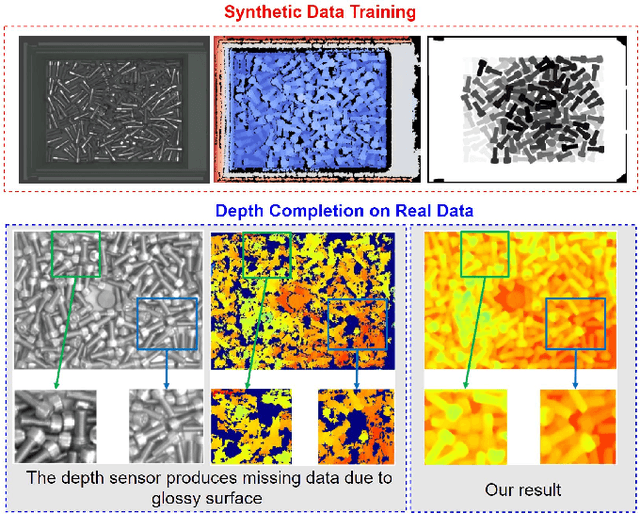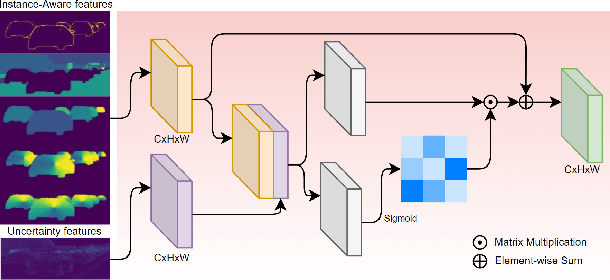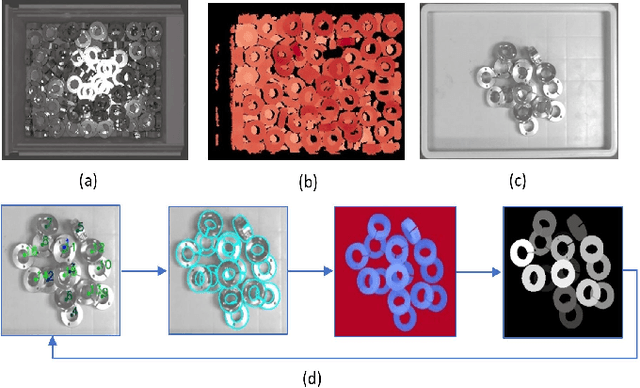Fengjia Zhang
Augmenting Perceptual Super-Resolution via Image Quality Predictors
Apr 25, 2025Abstract:Super-resolution (SR), a classical inverse problem in computer vision, is inherently ill-posed, inducing a distribution of plausible solutions for every input. However, the desired result is not simply the expectation of this distribution, which is the blurry image obtained by minimizing pixelwise error, but rather the sample with the highest image quality. A variety of techniques, from perceptual metrics to adversarial losses, are employed to this end. In this work, we explore an alternative: utilizing powerful non-reference image quality assessment (NR-IQA) models in the SR context. We begin with a comprehensive analysis of NR-IQA metrics on human-derived SR data, identifying both the accuracy (human alignment) and complementarity of different metrics. Then, we explore two methods of applying NR-IQA models to SR learning: (i) altering data sampling, by building on an existing multi-ground-truth SR framework, and (ii) directly optimizing a differentiable quality score. Our results demonstrate a more human-centric perception-distortion tradeoff, focusing less on non-perceptual pixel-wise distortion, instead improving the balance between perceptual fidelity and human-tuned NR-IQA measures.
Efficient Flow-Guided Multi-frame De-fencing
Jan 25, 2023



Abstract:Taking photographs ''in-the-wild'' is often hindered by fence obstructions that stand between the camera user and the scene of interest, and which are hard or impossible to avoid. De-fencing is the algorithmic process of automatically removing such obstructions from images, revealing the invisible parts of the scene. While this problem can be formulated as a combination of fence segmentation and image inpainting, this often leads to implausible hallucinations of the occluded regions. Existing multi-frame approaches rely on propagating information to a selected keyframe from its temporal neighbors, but they are often inefficient and struggle with alignment of severely obstructed images. In this work we draw inspiration from the video completion literature and develop a simplified framework for multi-frame de-fencing that computes high quality flow maps directly from obstructed frames and uses them to accurately align frames. Our primary focus is efficiency and practicality in a real-world setting: the input to our algorithm is a short image burst (5 frames) - a data modality commonly available in modern smartphones - and the output is a single reconstructed keyframe, with the fence removed. Our approach leverages simple yet effective CNN modules, trained on carefully generated synthetic data, and outperforms more complicated alternatives real bursts, both quantitatively and qualitatively, while running real-time.
* 16 pages, 12 figures. Published at the Winter Conference on Application of Computer Vision (WACV) 2023
Self-Guided Instance-Aware Network for Depth Completion and Enhancement
May 27, 2021



Abstract:Depth completion aims at inferring a dense depth image from sparse depth measurement since glossy, transparent or distant surface cannot be scanned properly by the sensor. Most of existing methods directly interpolate the missing depth measurements based on pixel-wise image content and the corresponding neighboring depth values. Consequently, this leads to blurred boundaries or inaccurate structure of object. To address these problems, we propose a novel self-guided instance-aware network (SG-IANet) that: (1) utilize self-guided mechanism to extract instance-level features that is needed for depth restoration, (2) exploit the geometric and context information into network learning to conform to the underlying constraints for edge clarity and structure consistency, (3) regularize the depth estimation and mitigate the impact of noise by instance-aware learning, and (4) train with synthetic data only by domain randomization to bridge the reality gap. Extensive experiments on synthetic and real world dataset demonstrate that our proposed method outperforms previous works. Further ablation studies give more insights into the proposed method and demonstrate the generalization capability of our model.
 Add to Chrome
Add to Chrome Add to Firefox
Add to Firefox Add to Edge
Add to Edge